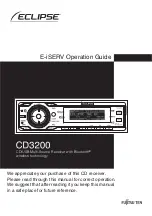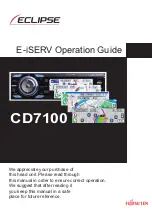
Loopback Payload
The loopback payload feature is an ESF-only method of loopback which loops the network receive input path to
the remote T1 equipment’s transmit output path. This loopback method does not loop the first bit of each frame to
allow the DXPT1 board’s facility data link to continue to transmit maintenance information. You can use switches
SW2–7 and SW2–8 to manually initiate the payload loopback or you can allow the network to send an FDL
message to initiate or restore the payload loopback. The DXPT1 board goes out-of-service during the loopback
time.
Loopback Remote
The loopback remote feature loops the network receive input path to the remote T1 equipment’s transmit output
path. The remote loopback feature terminates all traffic and halt any call processing. You can use the SW2
switches to manually initiate remote loopback or you can allow the network to remotely initiate the condition. In
superframe mode with SW2–1 set to on, the network can send a special in-band pattern
(00010001000100010001.... min 5 seconds) to cause the DXPT1 board to automatically enter the remote
loopback mode. The network can disable the loopback by sending a different in-band pattern
(001001001001001001001.... min 5 seconds). In ESF mode, the DXPT1 board’s facility data link, or maintenance
channel, can enable and disable remote loopback automatically or you can set SW2–7 on and SW2–8 off to
manually enable remote loopback or set both switches off to manually disable the feature. Loopback remote
operation is applicable to superframd and extended superframe modes.
LIU Line Interface Unit
The line interface unit is the interface between the T1 copper wires and the DXPT1 board’s framing circuitry.
The LIU is responsible for separating the 1.544MHZ receive clock from the incoming stream and converting
bipolar Alternate Mark Inversion (AMI) to 5–volt digital logic. The LIU also supports the automatic line build-out
that regulates the transmit level according to the receive strength (LIU-2 switch).
Loop Start T1 Trunk
Loop Start T1 Trunk is a network protocol that monitors outbound digits to the DXPT1 board. This protocol does
not support disconnect supervision. Loop start protocol supports the subscriber end of the communications path
but does not support the office (network) end.
Primary Clock Reference
The straps on the DXAUX board designate the primary clock reference. Primary clock reference is the first choice
reference clock used to synchronize the DXP Plus to the incoming span. If the system looses synchronization, it
uses its secondary clock reference. If the secondary clock reference is not available, the DXOPT-SYN card’s
variable clock oscillator (VCO) switches to the fixed oscillator on the DXSRV (services) board. When it does
this, slips occur.
Repeater
A repeater is a amplifying device that central office technicians place at approximately one mile intervals along a
T1 circuit to boost the T1 signal. The T1 specifications allow a maximum of 50 repeaters along a communications
path.
Slip
This term describes the condition that exists when the transmit 1.544 MHz clock is different from the receive
1.544 MHz clock. When the system collects or looses a frame of information due to the span frequencies being
different, the system generates a slip error. Slip does not affect voice transmissions and may not affect modem
traffic; however slip does effect digital data traffic. The DXPT1 board does not currently support digital data
traffic. Also, at times a central office takes a T1 span out of service if too many slips occur—one or two a day is
permissible (the carrier supplier will furnish you with an an exact number if you request that information from
them).
Installing The DXPT1 Line Board
IMI89–193
Installing The DXPT1 Line Board – 35
















































